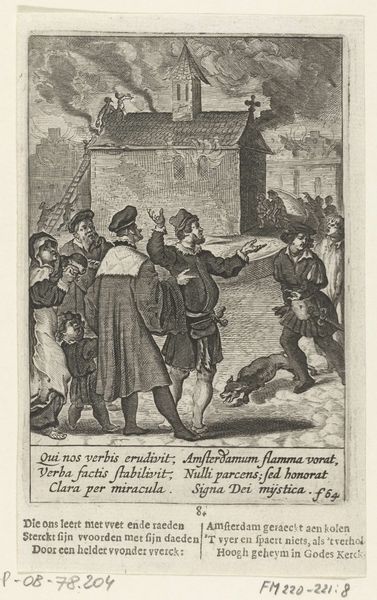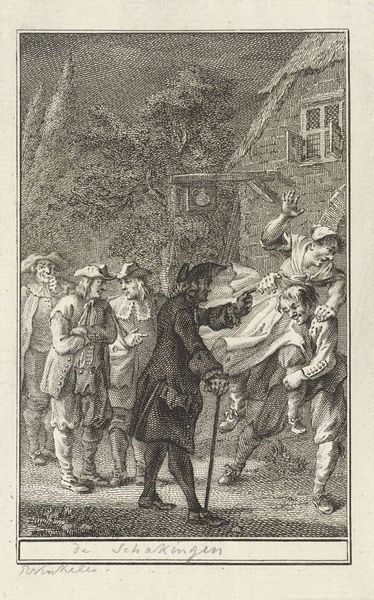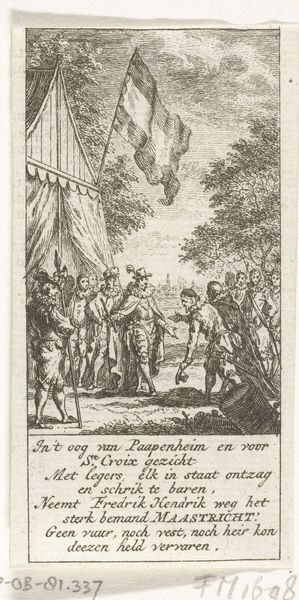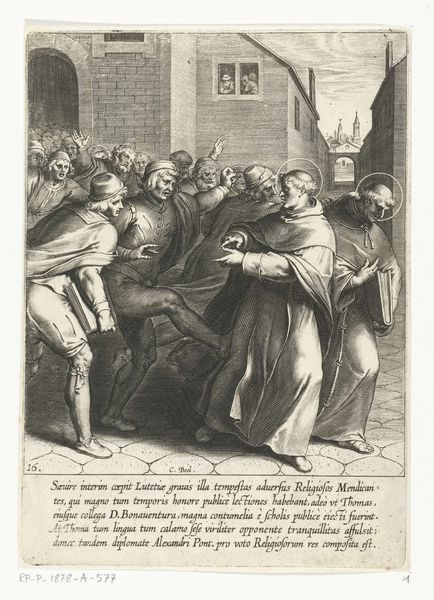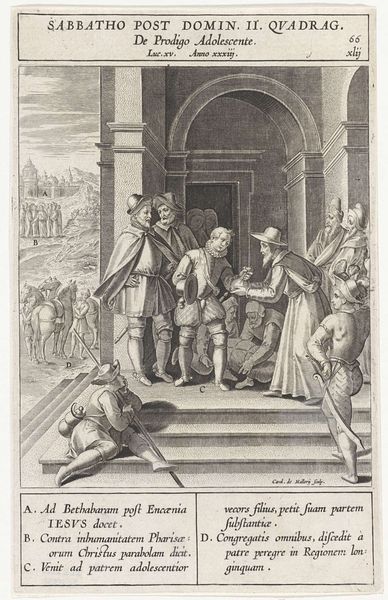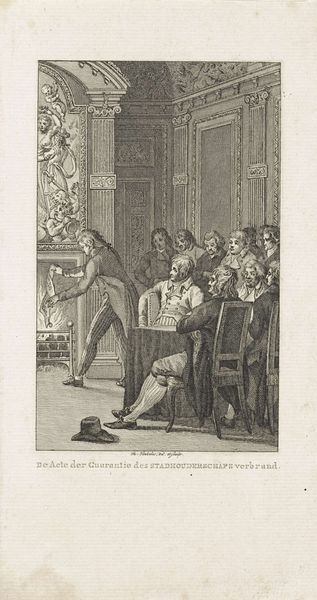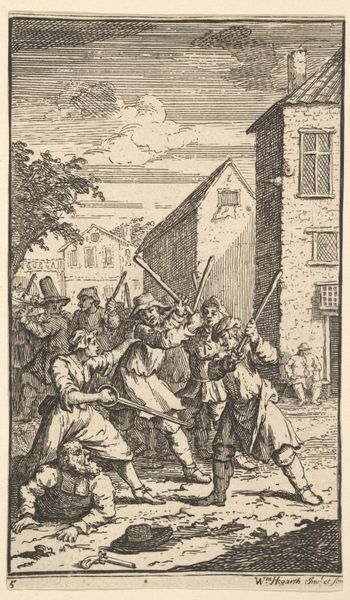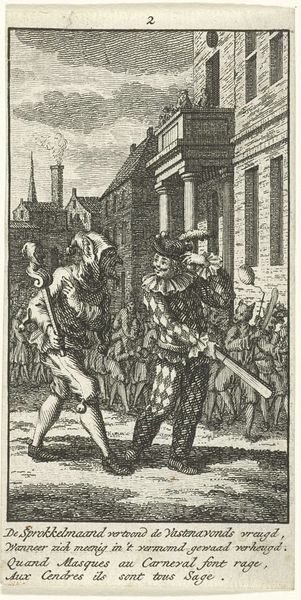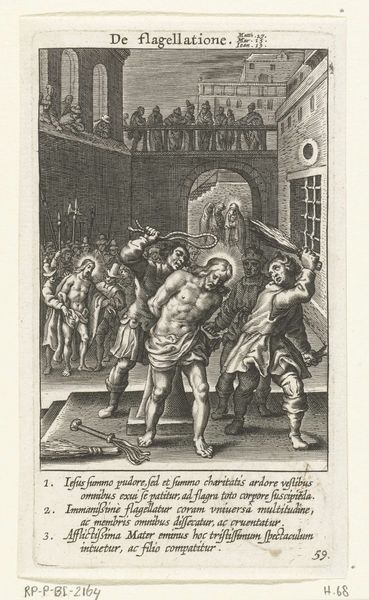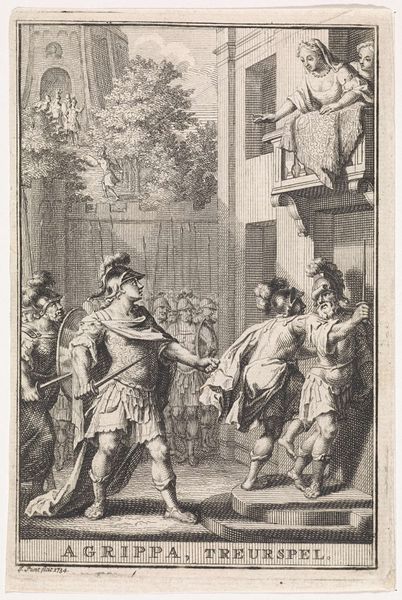
Kerk waar de hostie wordt bewaard brandt af maar de hostie blijft gespaard 1590 - 1639
0:00
0:00
boetiusadamszbolswert
Rijksmuseum
print, engraving
#
narrative-art
#
baroque
# print
#
old engraving style
#
history-painting
#
engraving
Dimensions: height 131 mm, width 81 mm
Copyright: Rijks Museum: Open Domain
Curator: Welcome. We’re looking at “Kerk waar de hostie wordt bewaard brandt af maar de hostie blijft gespaard,” a fascinating engraving attributed to Boëtius Adamsz. Bolswert, likely created between 1590 and 1639. It resides here in the Rijksmuseum. Editor: The title alone conjures a strong image. It feels like an active depiction of communal crisis, with that burning church as its focal point. It's chaotic but rendered with delicate lines. The people appear quite shocked. Curator: Exactly. It depicts a story – a narrative event frozen in time. During this period, history prints such as these gained traction as vehicles of popular piety as they offered a view into the supernatural power present in everyday life. Here the miracle itself is the centerpiece. Editor: I’m immediately drawn to what appears to be a class disparity represented in the composition. The figures in the foreground, closest to us, seem to belong to a privileged class while the burning structure has a civilian atop, evoking, at least for me, questions about access, safety and consequence of an uncontrolled fire. What do you think about its function as a representation of religious power dynamics? Curator: It’s crucial to understand the engraving within the context of the Counter-Reformation, where visual narratives were harnessed to reinforce religious authority and affirm doctrine through miracle. While there may very well be disparities present, remember that prints were commissioned in bulk to be consumed and contemplated. In this case, I’d hesitate to place too much focus on class; what stands out for me is a symbolic depiction of defiance against what some would call heresy, represented by a church aflame while a symbol of catholic purity –the hostie –is unharmed by the same flames. Editor: So the miracle underscores a specific doctrinal viewpoint? Curator: Precisely. The fact that the hostie remains untouched is symbolic and sends the message: Catholicism is favored over reformist movements and that God looks after Catholicism and its sanctity. Editor: Seeing the hostie framed as ‘saved’ emphasizes both the authority of the Catholic Church but can also serve to incite prejudice during such religiously fraught moments. It makes me think about the power images had then and how they can be manipulated. Curator: It truly highlights the persuasive influence art can exert and allows us to consider how similar strategies might play out in the public sphere even now. Editor: This engraving makes it quite clear that faith, and images of faith, are far from apolitical. The composition, heavy symbolism, and moment in time create a powerful narrative and the ability to see that laid out allows us a modern connection and the recognition that such narratives are constantly shaping our perception today.
Comments
No comments
Be the first to comment and join the conversation on the ultimate creative platform.
